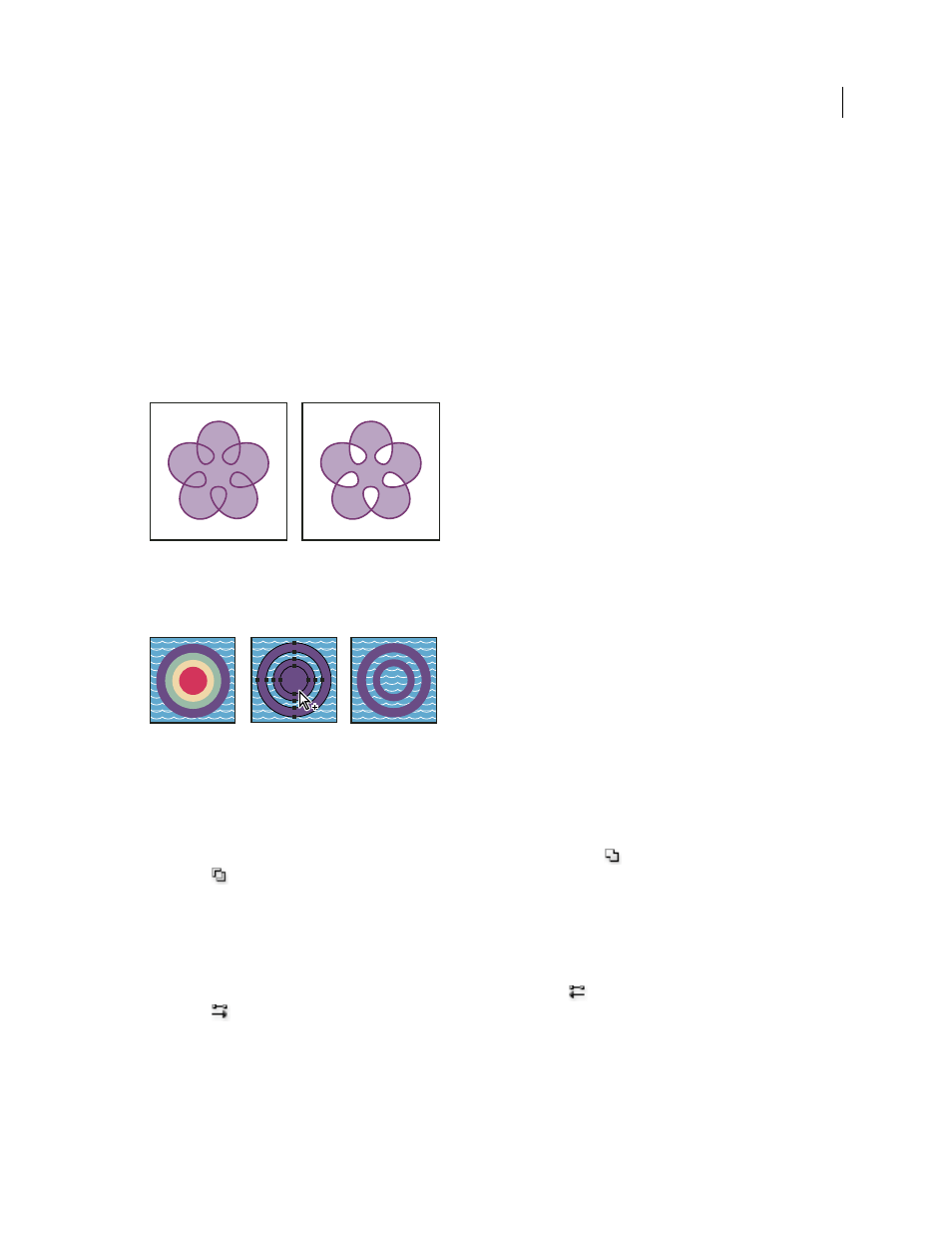Apply fill rules to compound paths, Change the fill rule for a compound path, Change a hole in a compound path to a filled area – Adobe Illustrator CS4 User Manual
Page 246: Return a compound path to its original components

239
USING ADOBE ILLUSTRATOR CS4
Reshaping objects
Apply fill rules to compound paths
You can specify whether a compound path is a nonzero winding path or an even-odd path.
Nonzero winding fill rule
Uses mathematical equations to determine if a point is outside or inside a shape. Illustrator
uses the nonzero winding rule as the default rule.
Even-odd fill rule
Uses mathematical equations to determine if a point is outside or inside a shape. This rule is the
more predictable rule because every other region within an even-odd compound path is a hole, regardless of path
direction. Some applications, such as Adobe Photoshop, use the even-odd rule by default, so compound paths
imported from these applications will use the even-odd rule.
Self-intersecting paths are paths that intersect themselves. You can choose to make these paths either nonzero winding
or even-odd, depending on how you want them to look.
Self-intersecting path with Use Non-Zero Winding Fill Rule (left) compared with Use Even-Odd Fill Rule (right)
When you create a nonzero winding compound path, you can specify whether overlapping paths appear with holes or
are filled by clicking a Reverse Path Direction button in the Attributes panel.
Fill rules
A. Four circular paths B. Circular paths selected, converted into compound path C. Reverse Path Direction applied to innermost path
Change the fill rule for a compound path
1
Select the compound path using the Selection tool or Layers panel.
2
In the Attributes panel, click the Use Non-Zero Winding Fill Rule button
or the Use Even-Odd Fill Rule
button
.
Change a hole in a compound path to a filled area
1
Make sure that the compound path uses the nonzero winding fill rule.
2
With the Direct Selection tool, select the part of the compound path to reverse. Do
not select the entire compound path.
3
In the Attributes panel, click the Reverse Path Direction Off button
or the Reverse Path Direction On
button
.
Return a compound path to its original components
1
Select the compound path using the Selection tool or Layers panel.
2
Choose Object > Compound Path
> Release.
B
C
A